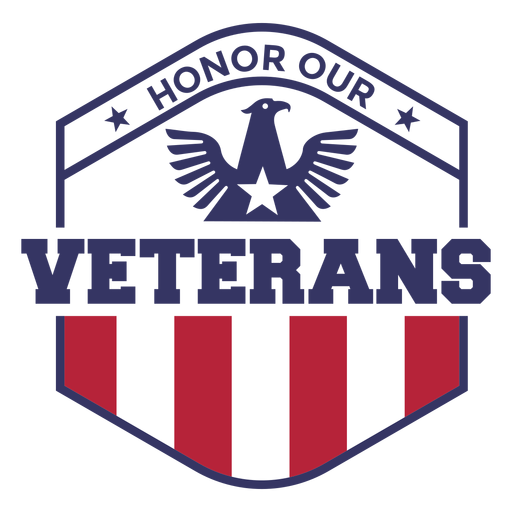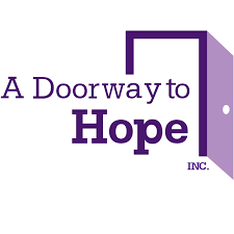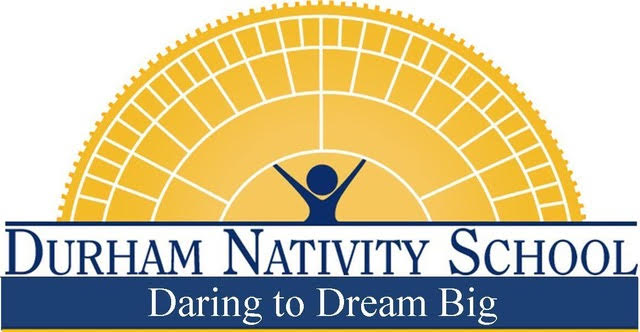|
By Jordan Lappin When it comes to nonprofit organizations, there are many factors that can contribute to success. Plenty of tangible elements can make a difference, from effective fundraising strategies to strong leadership. However, one intangible factor is perhaps the most important: a strong sense of community.
At its core, a nonprofit organization is designed to serve a particular group or cause. Whether it's helping disadvantaged individuals or promoting environmental sustainability, the mission of the organization is what brings people together. However, it's the sense of community that develops around that mission that can truly set a nonprofit apart. So, what does a strong sense of community look like in a nonprofit context? It can manifest in a number of ways: 1. Shared Values A great nonprofit organization will have a set of values that guide everything it does. These values should be clear, meaningful, and shared by all members of the community. When everyone is on the same page about what the organization stands for, it's much easier to work together towards a common goal. 2. Active Engagement A sense of community is all about active engagement - people getting involved, contributing their time and resources, and working towards a common goal. A great nonprofit creates opportunities for people to engage in meaningful ways, whether it's through volunteering, attending events, or contributing financially. 3. Open Communication Communication is key to any successful organization. A great nonprofit will prioritize open and transparent communication with its members, sharing updates on its activities and progress toward its goals. This builds trust and keeps everyone on the same page. 4. Welcome to All A strong sense of community welcomes people from all backgrounds and walks of life. This means creating opportunities for people to get involved regardless of their socioeconomic status, ethnicity, religion, or any other factor. When everyone feels welcome and valued, the sense of community is strengthened. But why is a strong sense of community so important for a nonprofit organization? 1. Community is a powerful motivator. When people feel like they are part of a community, they are more likely to be motivated to contribute their time, resources, and expertise. They know they are part of something bigger than themselves, and that their contributions are making a meaningful difference. 2. A strong community can help attract new members and supporters. When an organization has a strong sense of community, people are naturally drawn to it. They want to be part of something that makes a difference and values the contributions of its members. This can help a nonprofit attract new members, volunteers, and donors without having to expend as much effort on outreach. 3. Community can help sustain an organization long-term. Nonprofit organizations often face significant challenges, from fundraising to volunteer recruitment to changes in government policy. However, a strong sense of community can help sustain an organization through these challenges. When people feel connected to an organization and its mission, they are more likely to stick with it even when things get tough.
0 Comments
By Jordan Hannan We are so proud to announce that one of our nonprofit partners, A Place at the Table, was featured on the Kelly Clarkson Show on January 12th, 2023!
The show celebrates a “Good Neighbor of the Year”, and A Place at the Table was recognized for the positive change that they’ve created within and beyond Raleigh. As a changemaker in the culture of pay-what-you-can restaurants, they’ve altered the atmosphere of their restaurant to provide a comforting place where anyone and everyone can enjoy a healthy and delicious meal together. In addition to bringing well-deserved awareness to their mission, Clarkson has donated $10,000 to further their impact and influence. Triangle Cares congratulates the founder, Maggie Kane, and we are looking forward to seeing the future of A Place at the Table. We hope to see more celebrities promoting both small and established nonprofits, especially within the Triangle! If you want to read more about A Place at the Table, check out our spotlight blog here. By Jordan Hannan The work of a nonprofit is often heavily tied to a numerical measurement of success: How many families were aided? How much money was raised? How many volunteers cycled through in the last month? How quickly was the end goal achieved? How many people visited the website or heard of the mission? Quantitative data is much easier to determine, which is why many nonprofits use it to label their success. However, this mentality mirrors that of a corporation, where the final goal is monetary success. When applied to a nonprofit, where funds are merely used as a tool to reach a more humane goal, numbers are rendered meaningless.
This prompts the question: If not numerically, how can I measure success as a nonprofit? However, I challenge you to alter that mentality, changing your focus to a new question: When does our success begin? Triangle Cares has found the answer. The goal of any nonprofit is to invoke positive change, to spread an inspiring message, to provide hope to the hopeless, or to improve the life or environment of at least one person. For this reason, I would argue that the moment you even consider to begin a nonprofit, you have become successful. You have accomplished your goal the moment you begin. This is not an excuse to stop there, not a reason to back down after one productive day, not an end to innovation or perseverance. Rather, it's motivation to continue: knowing that you cannot fail. Every partner, volunteer, or dollar that supports you after day one is just another victory. For this reason, we applaud every one of our nonprofits for all of their hard work, from the newly-created Flak Foundation to the well-established Ronald McDonald House. We love to support you in your journey to create the future that we all wish to see. By Jordan Lappin As 2022 comes to a close and we head into 2023, many nonprofits look to set new goals for the new year, an important step in evolving and directing the organization's efforts. Here are some steps to consider when creating goals for your nonprofit organization for the coming year:
Happy New Year! We look forward to connecting with more volunteers and nonprofits in 2023! By Jordan Lappin This week, we would like to highlight one of Triangle Cares’ newest partnerships with The Flak Foundation. The Flak Foundation was created this year by Chris and Karra Athey after the passing of Bobby Flak, one of Chris Athey’s good friends and a fellow marine who served with him in Iraq and Afghanistan between 2009 - 2010. When Bobby returned home from his tour, he struggled with PTSD and addiction, and he tragically passed away in 2021. Bobby was the third marine that Chris knew that died from addiction or suicide that same week following their deployment. Chris felt that it was time for veterans to take matters into their own hands and help each other out. The reality is that only Chris and his fellow comrades really know what eachother went through on the battlefield and what it’s like to transition home to “normal life” and cope with the wounds of battle at home.
Chris and his wife Karra started the Flak Foundation to help veterans with depression, anxiety, and addiction. Their mission is to bring veterans, active service members, and families together in regions across the US to help veterans find the help and support they need. By hosting events in these areas, the Flak Foundation aims to bring as many local resources to the events. The Flak Foundation has also created a buddy system between veterans to help rescue each other in crisis and begin the conversation of these issues to truly find peace, hope, and healing. During an interview with The Ohana Homefront Organization, Chris mentioned that veterans are oftentimes “adrenaline junkies''. When they come home from a tour, they lose that adrenaline high and resort to drugs and alcohol as a coping mechanism. A unique aspect of the Flak Foundation is the programming with equine, surfing, hiking, diving, and other outdoor activities so that veterans can feel the rush of adrenaline, have fun, and ultimately rediscover the beauty of life. The Flak Foundation is holding its first event January 14th at the Mordecai Historic Park in Raleigh, NC from 11:00 to 14:00. By Jordan Lappin More than 10% of the one million people living in Wake County live in poverty. That breaks out to over 106,000 people who struggle to make ends meet every day. What is even more heartbreaking, is that of those 106,000 people, ONE in four are children. According to the News and Observer’s special report, “North Carolina has one of the country’s fastest rising poverty rates. A decade ago, we were 26th – a little better than average. Now we’re 11th, speeding past the competition. We’ve also seen, over the same period, one of the steepest increases in the ranks of the uninsured.”
Now more than ever, as inflation has caused a steep increase in prices: groceries, gas, clothes, etc., families around the Triangle are struggling. And this is where A Doorway to Hope can help. A Doorway to Hope is a Christian organization that was founded in 2010 to serve working, low income families who are at a crisis point and need a helping hand. The mission of A Doorway to Hope is to provide necessary resources and links to local services to give temporary, emergency help. Rather than subsidizing income, A Doorway to Hope links working families in crisis with partner agencies to meet their immediate needs with one-time assistance returning them to a state of self-sufficiency. The organization partners with Wake County Public School social workers, churches, and other community agencies to carefully screen working families in need, many of whom do not qualify for government assistance. Since A Doorway to Hope began in 2010, they have provided financial assistance to help 500+ families from evictions, the Summer Foods Program has served more than 2,000 meals, and the Angel Tree Project has provided over 3,000 children with necessary clothing items and toys. A Doorway to Hope was started by a group of women from St. Michael’s Church in Cary. Their Executive Board consists of three individuals: Maria Young, co-founder, President and Executive Director, Vice President Laura Grelck, who also serves as the co-director of the Crisis Team, and their Treasurer and co-founder, Martina Young. Their board consists of 13 dedicated members and they have many volunteers that serve in various capacities. One of the most unique things about their organization is that they are a 100% volunteer run non-profit. They have wonderful partnerships with some of Triangle Care’s partnered organizations like a Note in the Pocket, Catholic Charities, and Dorcas Ministries to collaborate to meet all the needs a family may have. If you’re interested and would like to volunteer, A Doorway to Hope has a number of volunteer opportunities, especially during the Holiday season. Check out their website for more information! By Jordan Lappin The truth is that the education system in the US is failing its students. Compared to other countries throughout the world, the United States ranks 38th in math and 24th in science out of 71 countries. For students from under-resourced families, the reality is much worse. Black and Hispanic graduation rates lag behind the broader community, and there is a huge achievement gap between students from underprivileged families and those from families with greater resources. And that’s where Durham Nativity School comes into the picture.
In the early 2000’s, Dr. Moylan, a Duke Hospital Trauma Surgeon, was tired of seeing young black men end up in the trauma unit as a result of gang violence on the streets of Durham. And he decided to do something about it. As retirement approached, someone suggested that Dr. Moylan visited the Nativity School in New York City. In Brooklyn NY, the original Nativity School is an extended-day and school-year program designed to prepare middle school students for four-year college preparatory schools, followed by college “to become people for others.” The Moylans visited the New York Nativity School as well as other Nativity schools in Boston and Baltimore. They ultimately concluded that the Nativity Miguel Model of a sustained (rather than a short-term) approach to education would be the most effective in Durham. After a year-long planning process, along with the help of others in the Durham community, the school opened in the fall of 2002. Today, twenty years later, Durham Nativity School remains a pioneer of change in the US education system. The Mission of Durham Nativity School is to provide an excellent education for young men, empowering them to make a difference in the world. What differentiates Durham Nativity School from other institutions is its twelve-year support system for young men in 5th through 8th grade who have the ability and commitment to achieve, but not the resources for a quality, independent school education. During 8th grade, the Director of Graduate Support guides each student through the high school application process. DNS assists in any gaps in high school scholarship and tuition that the family may be unable to afford. Upon graduation from middle school, DNS helps with the transition to high school, monitors the students progress, and acts as a supportive resource for each student during uncertain times.To date, Durham Nativity School maintains a one hundred percent high school graduation rate, and more than ninety percent of our graduates have attended college. So how can you volunteer at Durham Nativity School? 1. Become a tutor - commit to coming to the school each week to provide 1 on 1 assistance to the boys who need help in subjects they may struggle with. 2. Donate school supplies and sports equipment - DNS is always appreciative of these kinds of items to make sure the students have everything they need in the classroom and on the sports field. 3. Become a counselor at the Summer Reading Camp - Each summer, DNS holds a summer reading camp to make sure the boys stay caught up to their grade reading level and to provide support to the students' parents who need someone to watch their children as they work. 4. Volunteer as a club mentor - Is there a certain sport or niche that you are passionate about? DNS is looking to grow its selection of extracurricular clubs to enhance the learning experience, so commit to coming once a week to teach the boys. By Jordan Lappin This week, we are highlighting A Place at the Table in Raleigh, NC!
A Place at the Table is a pay-what-you-can cafe located in downtown Raleigh--one of 61 cafes across the entire US. A Place at the Table was founded by Maggie Kane in 2013; she grew up volunteering at soup kitchens and began to notice several things as a young and curious child: “One thing that always struck me as strange was why I was the one serving this food across the line to a kid who looked just like me. We would scoop out whatever we had prepared that day, sometimes chicken, sometimes pork, and serve it to a kid that looked just like me.” After graduating from college, Maggie decided to take the nonprofit route where her passion lies. “One in seven people are food insecure in Raleigh! That’s one in seven people in your row. Think about it that way. One in five children are hungry. That is not okay! Knowing these numbers and getting to know so many incredible people experiencing poverty, I knew I needed to do something about it.” And Maggie did do something about it. She opened the second pay-what-you-can-cafe in North Carolina. A Place at the Table is an alternative to the standard soup kitchen model. A Place at the Table feels like a real restaurant… because it is a real restaurant. When you walk in you smell fresh baked pastry items and the smell of bacon. You hear music playing. People gather with friends and family and partake in conversation over a quality meal. What makes A Place at the Table Different from other restaurants however, is that once you get up to the register and order your meal, the person working the register says, “your suggested price is…would you like to pay that price, less, or volunteer for your meal?” Suggested pricing means just that. You can choose to pay that price, pay more, and pay it forward for someone else who can’t afford their meal. You can also pay less if that is all you have. The key feature of A Place at the Table is that you can pay by volunteering. Maggie Kane says that nearly 40 to 60 people per day are signed up to volunteer or are volunteering for their meal. The mission of A Place at the Table is clear: to provide community and good food for all, regardless of means. “We eat together. And we volunteer together.” By Jordan Lappin As we begin nearing the holiday season and Giving Tuesday, we are starting a blog series to highlight the incredible organizations that we are partnered with at Triangle Cares. This week, we are highlighting the amazing work that takes place at GiGi’s Playhouse!
Down syndrome remains the most common chromosomal condition diagnosed in the United States. Each year, about 1 in every 700 babies are diagnosed with Down syndrome. Despite these staggering numbers, down syndrome is the least funded chromosomal disability in the United States. GiGi’s playhouse was created by Nancy Gianni in 2003 after her baby was born with down syndrome. “About an hour after my daughter GiGi was born, the doctors suspected she had Down syndrome. Panic was welling up inside me but I was afraid for anyone to see it. As soon as my husband and I made eye contact I said, “if anyone can handle this we can.” I knew we were going to get through this together. Don’t get me wrong – we were petrified! I can not even begin to tell you the total fear and devastation I felt. Everything they were telling us about Down syndrome was so negative! Suddenly no one had eye contact with me anymore, they kept the door to my room closed and they kept sending in the clergy! If this was happening to us already what was life going to be like for our kids? I was so afraid to bring her home and start this “new” life. I remember when people first came to visit. There were hugs of sympathy not congratulations. They would tip toe towards the bassinet and seemed afraid to look inside to see what she would look like. Then when they finally mustered up the courage to look they saw this beautiful little baby and they were shocked! They always exclaimed “Oh my gosh! She is adorable!” I really don’t know what they were expecting to see but finally people started to realize she was just a baby. One night when Gigi was a toddler, I made a promise to her that I would change the way the world looked at a person with Down syndrome; that I would help people understand that she and all of her friends were so much more than a diagnosis. With the help of people like you and the Playhouses across the world, that promise is being kept – not just for GiGi but for all our children.” Thanks to Nancy Gianni, GiGi’s playhouse is the only network of Down Syndrome Achievement Centers with over 56 brick and mortar locations across the United States and Mexico. The mission of GiGi’s playhouse is clear: to change the way the world views Down syndrome and to send a global message of acceptance for all. Every day, GiGi's provides free life-changing therapeutic, educational, and career training programs for 30,000+ individuals of all ages who have down syndrome. These programs include teaching fine motor skills, gross motor skills, social skills and language, and career skills. https://gigisplayhouse.org/ways-to-give/ By Jordan Lappin Take a moment and think of the most popular and reputable nonprofit organizations that exist today. Which ones jump to the top of your head? For me, I immediately think of the American Red Cross, Salvation Army, Habitat for Humanity, and St. Jude’s Research Hospital. These organizations collectively bring in billions of dollars each year and make a tremendous impact in local communities and throughout the world. But what is the key that makes these organizations so successful? Branding.
What is branding? The word ‘branding’ can sound like something that’s strictly reserved for large for-profit companies, but branding is as important for nonprofit organizations as it is for businesses. Branding is “the process of researching, developing, and applying a distinctive feature or set of features to your organization so that consumers can begin to associate your brand with your products or services.” More specifically for the nonprofit sector, branding is the experience people have with your organization - your logo, your mission, your values, and the experience of being apart or working with the people in your organization. As part of the leadership team for your nonprofit organization, you might feel overwhelmed with all of the moving pieces - the fundraising, recruiting volunteers, the operation, and most importantly ensuring that your organization is serving your mission. While all of those pieces are very important, it's critical to not overlook what might be the secret to sustained success: a strong brand. Here is a concise guide to developing your brand as a nonprofit organization: 1. DIG DEEP INTO YOUR IDENTITY: Arguably the most important step in creating your branding is digging deeper into the core of your organization. How can your branding most accurately reflect your mission statement? How can your branding convey what goals you’re trying to achieve? Who is your audience? How can you use this information to design your branding with them in mind? 2. TELL YOUR STORY: Storytelling is the key to a compelling and successful brand. We are naturally more inclined to listen to and remember stories that pique our interest, so weaving a story through your brand can draw supporters in. A good story can also unlock the emotional appeal that can motivate your supporters to get involved. 3. DETERMINE THE VISUAL ELEMENTS: Stylistic choices can make the difference between a supporter remembering your nonprofit or simply forgetting, so be bold and strategic with your selections. Make sure to carefully consider these visual elements: Colors, Fonts, Logo Variations, Taglines, & Photos. Lastly, while it's important to commit to these characteristics of your brand to create cohesiveness and consistency, it's important to regularly review your brand strategy! Don’t be afraid to subtly update your strategy over time. |
AuthorsJordan Hannan and Jordan Lappin Archives
January 2023
Categories |
Proudly powered by Weebly











 RSS Feed
RSS Feed